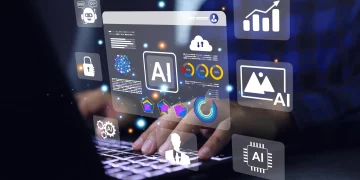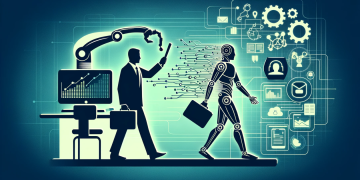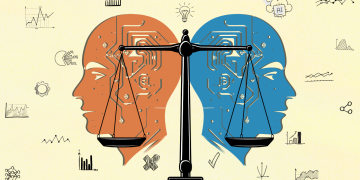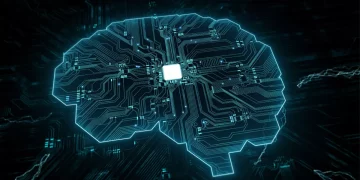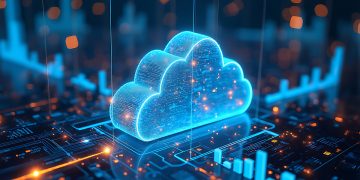Introduction
Artificial Intelligence (AI) development has rapidly evolved over the past decade, becoming an essential component in various industries ranging from healthcare to finance, transportation, and entertainment. The success of AI projects hinges on the use of the right tools and datasets. For AI developers, choosing the right training tools and datasets can make or break the efficiency and effectiveness of machine learning models. The sheer volume of available tools, libraries, frameworks, and datasets can be overwhelming, especially as the field continuously advances.
In this article, we will dive deep into the essential resources every AI developer should know about. From understanding the importance of training tools and datasets to providing actionable insights on how to evaluate and select the best options, this article will provide both novice and experienced AI developers with valuable advice. We will explore key factors such as the nature of the project, the type of model being developed, scalability, and the ethical implications of data selection. The goal is to equip developers with the knowledge and insights they need to make informed decisions about the tools and datasets they use in their AI projects.
Section 1: Understanding AI Training Tools
1.1. What are AI Training Tools?
AI training tools refer to the software and frameworks that allow developers to build, train, and optimize AI models. These tools include machine learning libraries, neural network frameworks, and deep learning platforms that are essential for creating predictive models, classification systems, recommendation engines, and more. The right AI training tool allows developers to reduce complexity, speed up the model-building process, and improve the accuracy of the models.
1.2. Types of AI Training Tools
There are several categories of AI tools, each serving a different purpose in the development process:
1.2.1. Machine Learning Libraries
Machine learning libraries provide ready-to-use algorithms and functions that can simplify the model-building process. These libraries are essential for developers who want to focus on solving problems instead of reinventing the wheel.
- Scikit-Learn: This Python library is ideal for machine learning applications. It provides algorithms for classification, regression, clustering, and dimensionality reduction.
- TensorFlow: Developed by Google, TensorFlow is a powerful open-source framework that supports deep learning, machine learning, and statistical modeling. TensorFlow is known for its scalability and flexibility.
- PyTorch: PyTorch is a deep learning framework developed by Facebook, popular for its dynamic computational graphs and ease of use. It is widely used for natural language processing and computer vision.
1.2.2. Neural Network Frameworks
For more advanced AI applications that involve neural networks, frameworks like TensorFlow and PyTorch provide robust support for building complex models. These frameworks allow for multi-layered neural networks, enabling AI developers to create models that can process vast amounts of data with high accuracy.
- Keras: Built on top of TensorFlow, Keras simplifies the process of designing and training deep learning models. It is often favored for rapid prototyping.
- MXNet: This open-source deep learning framework is optimized for both efficiency and scalability. It is designed to handle large-scale applications and is used by major tech companies like Amazon.
1.2.3. Data Visualization Tools
Data visualization is crucial for understanding data patterns and model performance. Tools like Matplotlib, Seaborn, and Plotly are essential for developers who need to visualize training progress, analyze model errors, and present results clearly.
Section 2: How to Choose the Right Training Tools
2.1. Key Considerations for Selecting AI Training Tools
Choosing the right tool depends on several factors:
2.1.1. Type of AI Model
The type of model you are working with determines the framework or tool you should choose. For instance:
- For deep learning models, TensorFlow and PyTorch are typically the go-to frameworks.
- For traditional machine learning algorithms, Scikit-Learn is an excellent choice.
- If you are building an AI model for reinforcement learning, you might consider OpenAI Gym.
2.1.2. Project Scale and Complexity
The scale and complexity of your AI project play an important role in selecting training tools. If you are working on a simple classification model, lighter frameworks might be sufficient. However, for large-scale applications involving multiple layers or advanced features like transfer learning, you will need more robust platforms like TensorFlow or PyTorch.
2.1.3. Development Environment and Ecosystem Compatibility
Developers often prefer tools that are compatible with their existing tech stack. If you’re working in Python, libraries like Scikit-Learn, TensorFlow, and PyTorch offer excellent support. Similarly, when developing in Java, libraries like Weka and Deeplearning4j might be more appropriate. Consider whether the tool integrates well with other components of your development environment.
2.1.4. Performance and Scalability
The ability to scale models for large datasets and computational efficiency is crucial. While tools like Keras and Scikit-Learn are great for small to medium-scale problems, TensorFlow and PyTorch are better equipped to handle large-scale projects, especially when working with deep neural networks or when requiring multi-GPU processing.
2.1.5. Community Support and Documentation
A tool’s popularity and the size of its community can be invaluable for learning and troubleshooting. Tools like TensorFlow and PyTorch have massive developer communities and extensive documentation, making them easier to use and learn.
Section 3: Understanding Datasets for AI
3.1. The Role of Datasets in AI Development
Datasets are the backbone of AI model training. They consist of the input data used to train the machine learning algorithms. The quality, quantity, and variety of data in the dataset will directly impact the performance and generalization capabilities of the model. Datasets are typically labeled for supervised learning tasks or unlabeled for unsupervised learning tasks.
3.2. Types of Datasets for AI
3.2.1. Structured vs. Unstructured Data
- Structured Data: Structured datasets are organized in a predefined manner, such as in tabular format (e.g., CSV files or relational databases). These datasets typically contain labeled examples and are useful for tasks like classification and regression.
- Unstructured Data: Unstructured datasets include data that does not have a predefined structure, such as text, images, and audio. Working with unstructured data requires specialized techniques like image recognition or natural language processing (NLP).
3.2.2. Public Datasets
Many developers leverage public datasets for training models, especially during the initial phases of development or experimentation.
- Kaggle: Kaggle is a platform that provides a vast collection of datasets for various domains, including finance, healthcare, and computer vision.
- Google Dataset Search: Google’s dataset search engine helps developers find datasets across the web. It aggregates datasets from open repositories and makes it easy to discover resources.
- UCI Machine Learning Repository: A well-known repository that offers a variety of datasets suitable for machine learning experiments.
3.2.3. Custom Datasets
For specific use cases, developers may need to create custom datasets. This often involves data collection, cleaning, and labeling, which can be time-consuming. Custom datasets can provide a competitive edge when they are tailored to a business or domain-specific problem.

Section 4: How to Choose the Right Dataset
4.1. Dataset Relevance
Ensure that the dataset you choose aligns with your project’s goals. For example, if you are building a sentiment analysis model, you would need a dataset that includes text labeled with sentiments. For image classification tasks, you would require a dataset of labeled images.
4.1.1. Domain-Specific Datasets
For specialized industries such as healthcare or finance, there are domain-specific datasets available that contain data unique to those industries. These datasets often include highly valuable information that can lead to more accurate models in the relevant domain.
4.2. Dataset Size
The size of the dataset affects how well your model can generalize. A larger dataset typically leads to a more robust model, though it may come at the cost of increased computational requirements. Consider the trade-off between dataset size and your available computational resources.
4.2.1. Data Augmentation for Small Datasets
If you don’t have access to large datasets, data augmentation techniques can help. These methods artificially increase the size of your dataset by generating variations of the existing data, such as rotating images or introducing noise into text data.
4.3. Dataset Quality
High-quality datasets are critical for training effective AI models. Data cleaning is a crucial part of the process, as errors in the dataset can lead to inaccurate predictions. Ensure that the data is consistent, correctly labeled, and free from biases.
Section 5: Best Practices for Working with AI Training Tools and Datasets
5.1. Version Control for Datasets
Just like software code, datasets should be version-controlled. This helps in managing different versions of the data used for training and ensures that your experiments can be replicated accurately.
5.1.1. Tools for Versioning Datasets
- DVC (Data Version Control): DVC allows for versioning and management of large datasets and machine learning models in a way that integrates with Git repositories.
- Git LFS (Large File Storage): For datasets that are too large for traditional Git repositories, Git LFS allows you to track large data files in the same version control system.
5.2. Ethical Considerations
When selecting datasets, always consider the ethical implications. Avoid using biased or discriminatory data that may harm certain groups. Transparency in data collection and labeling is essential for maintaining fairness and avoiding unintended consequences in the model.
Conclusion
Choosing the right AI training tools and datasets is a critical step in developing high-performing and ethical AI models. Developers must consider a variety of factors, including the model type, project scope, scalability, and data quality when selecting tools and datasets. By leveraging the right resources, AI developers can significantly improve the effectiveness of their models, while also ensuring that they are using data responsibly. As AI continues to evolve, staying up-to-date with the latest tools and datasets will allow developers to remain at the cutting edge of innovation.


